Body Fat - Friend or Foe? - #HP-EVOO - Blog # 83
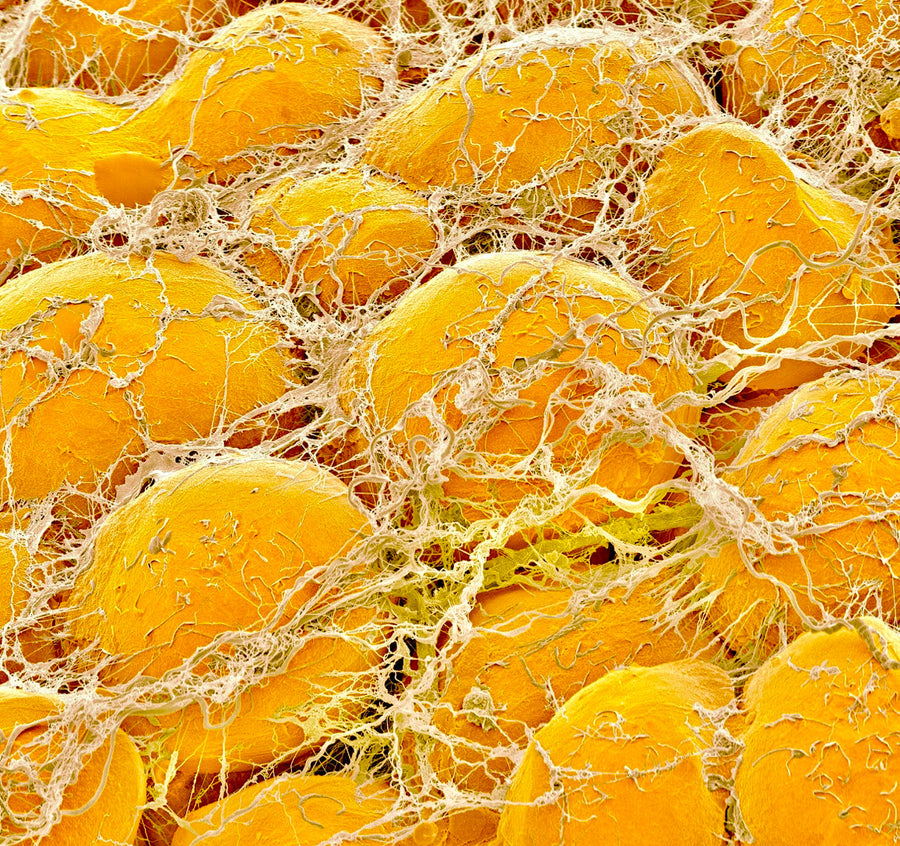
Hello Everyone! Welcome back to another Friday blog. Today I wanted to take a closer look at BODY fat. Did you know adipose tissue (AT) - or fat - is actually an organ embedded in a dense network of blood vessels? WHAT?! Fat is our energy storage - like an extra battery pack - designed to provide fuel for us in times when food is not available. Where our body stores this energy determines how healthy we are. Fat is really our friend…unless we allow it to grow out of control - then it becomes our foe. The type, color, location and amount of AT deposited on our body is extremely crucial to our health and longevity. Let’s delve in.
Let's take a look at the types and locations of FAT:
- Ectopic Fat - this is the hidden dangerous fat that infiltrates our organs - in and around our liver, heart and muscles - whereas abdominal fat is considered visceral fat and includes fat around our retroperitoneal organs, such as the kidneys, pancreas and intestines. Ectopic and visceral fat are the most dangerous types of fat - possessing a higher density of cells and demanding more blood flow - making it more biologically active. It produces hormones and inflammatory cytokines. It is the fat we cannot see - too much can squeeze our organs - literally suffocating them. When you pick up a 5lb weight, you feel it. If you have >1lb ectopic or visceral fat, you have disease processes brewing under the radar. You can even be skinny on the outside and fat on the inside - and not know it! We want as little visceral fat as possible < 1lb of this type of fat. It is associated with elevated glucose, triglycerides, and low HDL-C (high-density lipoprotein - cholesterol).
- VAT - (Visceral adipose tissue) is abdominal fat. Like ectopic fat, it is biologically active, producing hormones and inflammatory cytokines. Belly fat literally converts testosterone into harmful estrogens via aromatase. Estrogen is a growth hormone and in men creates enlarged prostate, soft skin and man-boobs - along with low testosterone. It also lowers testosterone in women driving accumulation of ectopic and visceral fat - increasing the risk of diabetes and some cancers. When ectopic fat builds up in the liver, the body tends to start storing it in the abdomen. You can estimate your visceral fat with a waist/hip ratio. Measure your waist at the largest part, then measure your hips. That ratio should ideally be .90 for men and .80 for women. This will give you an idea of where you stand - at least for most people. You can get a sonogram, CT scan or DEXA scan as well. However, MRI is the most accurate way to test.
- SAT - (Subcutaneous adipose tissue) is the fat stored under the skin. This is the fat we can see. This is the jiggly fat under arms, hips, thighs and jowls. It can be lumpy or give you a muffin top. This type of fat tends to be more protective and cushions our bony prominences. There are 2 types of SAT:
- 1) sSAT - (superficial subcutaneous adipose tissue) - this is the more protective fat, producing higher levels of adiponectin - a hormone that helps with insulin sensitivity and inflammation. “Incidence rate of metabolic syndrome was the highest in subjects with low serum adiponectin levels and high visceral fat area. Higher TG/HDL ratio in these subjects suggested insulin resistance may contribute to the development of metabolic syndrome."
- 2) dSAT - (deep subcutaneous adipose tissue) - this is much like VAT and is more dangerous because it produces inflammatory molecules. It lies deep under the "love handles." It is associated with VAT and hepatic (liver) fat. In men, it is also associated with peripheral and hepatic IR (insulin resistance), and low HDL-C.

Color dictates the function of AT (adipose tissue):
- WAT (white adipose tissue) - White color is due to a large lipid droplet with low numbers of mitochondria, “which not only stores energy in the form of triglycerides but also is recognized as an important endocrine and immune organ.” WAT secretes several peptide hormones (leptin), cytokines, angiotensinogen, plasminogen activator inhibitor-1 (PAI-1), adiponectin, resistin, steroid hormones, adipsin and adulation-stimulating protein (ASP).
“Virtually all known adipose secreted proteins are dysregulated when the WAT mass is markedly altered, either increased in the obese state or decreased in lipoatrophy.” This is a major contributing factor as to why obese or very thin/frail individuals have a higher risk of “all-cause” mortality, including Covid-19 or any other infection.
As adipocytes in AT grow and expand, they seek out new blood vessels to supply themselves. “With a high nutrient availability, the adipocytes store lipids in lipid droplets, and as their size expands oxygen availability is reduced. This mild hypoxic status can induce angiogenesis and remodeling of extracellular matrix to reduce hypoxia (Crewe et al., 2017).” So, if we keep over-eating, these cells get bigger and bigger until they need new ones to hold more fuel. Now, there are more cells requiring even greater blood supply. “In healthy AT, the vessels are lined by a single monolayer of quiescent ECs, which can rapidly switch to the angiogenic/proliferative state in the presence of angiogenic and metabolic signals to form new blood vessels (Draoui et al., 2017). AT produces and secretes various angiogenic factors such as angiopoietin-2 (Angpt2) and vascular endothelial growth factor (VEGF) as well as adipokines such as leptin and adiponectin, which influence and modulate angiogenesis and the vascular structure.” WAT is deposited in 2 general areas, on the viscera (organs) and under the skin.
- BAT (brown adipose tissue) - BAT is characterized by multiple small lipid droplets and many mitochondria - resulting in brown color. This is the GOOD FAT! It has a high respiration rate and functions to dissipate heat during cold exposure or diet-induced thermogenesis. It “uniquely expresses UCP-1 (uncoupling protein 1), enabling it to be specialized for energy expenditure and thermogenesis.” UCP-1 is a primary mitochondrial uncoupler - check out blog # 73 - that stimulates mitochondrial replication and browning of fat due to increased mitochondrial number.
Non-shivering thermogenesis is hormone-dependent. The hypothalamus produces TSH (thyroid stimulating hormone) signaling the thyroid to make thyroid hormone. It also signals the adrenal medulla to release norepinephrine that in the presence of T3 (active thyroid hormone) results in production of UCP-1 stimulating brown fat. BAT is metabolically very active and serves to supply heat to the organs.
Babies have LOTS of brown fat and have a racing metabolism. Adults have a paper-thin brown fat layer pressed near the bone, under your arms, sternum, back and abdomen and works like a space heater for your organs. When turned on it draws energy from WAT for power - literally burning away your white fat. “BAT expands when an organism is exposed to prolonged cold conditions and is linked with increased insulin sensitivity.”
- Brite/beige Adipose Tissue - they resemble WAT, but respond to thermogenic stimuli with increased respiration, increased thermogenic genes and dissipation of heat. This type of fat occurs during transition:
- “whitening” of BAT. “Chronic obesity damages the cytoarchitecture of brown adipose tissue (BAT), leading to whitening of brown adipocytes and impaired thermogenesis, characterizing BAT dysfunction.” This is the beginning of weight-gain and progression toward metabolic syndrome. We lose the ability to generate heat appropriately. As inflammation rises, we lose mitochondrial function.
- “browning” of WAT: There are several ways we can “brown” our WAT - through exercise, weight-loss, improving vitamin D status, polyphenols in HP-EVOO HT (hydroxytyrosol) and oleocanthal, carotenoids and other phytonutrients, IF (intermittent fasting) and hormesis (temporary stress that stimulate healing) - particularly exposure to cold. In fact, exposure to cold (acute and chronic) activate BAT 41.6% over insulin. “Cold- and exercise-induced beiging increases the number of metabolically active cells within WAT depots, which in turn constitutes an effective strategy to combat obesity and T2DM.”

Fat is our Friend: Embryonically, fat is the third tissue formed following blood vessels and nerves - demonstrating its importance! Small bubbles of fat (think of bubble-wrap) form around the nerves and blood vessels, serving as fuel tanks for growth and development. I actually noticed this fat surrounding the neuro-vascular bundle on cadaver dissection! Now it makes sense!! “During development, the human fetus accrues the highest proportion of fat of all mammals.” AT is vital and serves as a fuel/storage tank for triglycerides as well as regulating the production of hormones like angiotensin factors and cytokines. AT is directly involved in energy homeostasis of the body - is in control of the “Goldilocks” sweet spot of just enough and not too much.

Fat is our Foe: “AT expands through the increase in fat cell size (hypertrophy) and/or fat cell number (hyperplasia). The plasticity and expansion of AT is related to its angiogenic capacities. That is how good it is at stimulating growth of new blood vessels to supply itself. Angiogenesis is a tightly orchestrated process, which involves endothelial cell (EC) proliferation, migration, invasion, and new tube formation. The expansion of AT is accelerated by hypoxia, inflammation, and structural remodeling of blood vessels.” This is very similar to how cancer grows, stimulating angiogenesis to fuel its growth. When deposition of AT out-paces the growth of supplying blood vessels, the center of the expanding fat mass becomes very hypoxic (low oxygen) and cell death occurs. This releases inflammatory cytokines driving up chronic inflammation. This is very dangerous!! This is why obesity is associated with IR (insulin resistance), T2D (type 2 diabetes), CVD (cardiovascular disease), cancer, Alzheimer’s and more.
When we chronically over-consume and carry too much WAT on our body, it CRUSHES our metabolism (not the other way around), CRUSHES our major internal organs and LEAKS inflammatory hormones and cytokines into the body driving up chronic inflammation and the growth of more fat. Recent research has identified 4 phases of human metabolism. When excess fat is removed, we all share the same metabolism. 😳 WHAT???!!!! Have we not all thought - my metabolism is just slow. That’s why I’m gaining weight. Now we know, it’s the other way around - unhealthy fat is crushing our metabolism. Here are the phases: FYI - 60 is the new 20!!!
Phase 1 - birth to 1 year - super-high metabolic phase. Phase 2- ages 2-20 we gradually slow rate of metabolism to adulthood. Phase 3 from 20-60. THIS IS INCREDIBLE!!! This means we can DO something about it. We have control. Removing excess fat RESTORES our metabolism whether you are 20 or 60. The 4th phase is from 60-90 where the drop is roughly 17%.
The more weight we gain around our waist, the closer we get to CVD, IR, T2D, Alzheimer’s and dementia. Even people skinny on the outside can have fat literally pressing on and crushing their viscera (internal organs) - diminishing organ function - driving HTN (hypertension), IR, CVD, T2D, triglyceride and cholesterol imbalance, CKD (chronic kidney disease), cancer and more.
Interestingly, one of the first places we start accumulating WAT isn’t our waist - it is our tongue! Say WHAT???!!! The base including the posterior 1/3 of the tongue becomes marbled like a ribeye - tongue volume increases with weight-gain. This explains how even skinny people can have sleep apnea, and why obese individuals can have severe obstructive sleep apnea. One of the first clues that you are gaining weight is that you are starting to snore. FYI, this is also the geographic location of our oral microbiome. They can modify and begin producing more inflammatory products - contributing to cavities, infections, and dementia.
Hormones released from WAT control sensitivity to insulin, release of inflammatory process mediators - several cytokines, including IL-6 (interleukin-6) and stimulation of metabolic pathways. Here are some of the primary hormones released:
- Leptin - satiety hormone
- Ghrellin - hunger hormone
- Cytokinies- many are inflammatory (IL-6)
- adipsin - helps insulin bring glucose into the cell - “T2DM patients with β cell failure are deficient in adipsin.”
- visfatin - has insulin-mimetic actions and is produced in VAT secreted in parallel with obesity. It promotes insulin-resistance along with LPS, IL-1β, TNFα and IL-6. Its levels are also increased in acute lung inflammation and sepsis, which is accompanied by an insulin-resistant state.
- Angiotensinogen - part of the system regulating blood pressure. Elevated levels are associated with predisposition to hypertension.
- Aromatase - Excreted from belly fat - in men with belly fat, testosterone gets converted to estrogen, creating “man boobs” and soft skin. In women excess androgens increase belly fat, creating male-pattern hair loss and facial hair growth.
- Adiponectin - This protective hormone is more prevalent than any other hormone - it is the gas pedal on metabolism, improving uptake of nutrients, lowering inflammation and preventing metabolic syndrome. “Circulating adiponectin concentrations are reduced in obese individuals, and this reduction has been proposed to have a crucial role in the pathogenesis of atherosclerosis and cardiovascular diseases associated with obesity and the metabolic syndrome.” Adiponectin does many things:
- Increases utilization of FAs (fatty acids) and glucose in skeletal muscle
- Protects pancreatic β cell
- Decreases fat deposition in skeletal muscle
- Increases AMPK and PPAR-a in skeletal muscle
- Decreased hepatic (liver) glycogenolysis (breakdown of glycogen)
- Decreases hepatic gluconeogenesis (production of glucose)
- Increases catabolism of vLDL
- Increases HDL
- Decreases triglycerides
- Decreases ROS and inflammatory cytokines (IL-6)
- Decreases CRP and inflammatory markers
- anti-atherosclerotic
- Decreases TNF-α adhesion on human aortic endothelium and inhibits other adhesion molecules from adhering to endothelium
- Resistin - resists insulin from pulling sugar out of the blood. It is putting the brakes on metabolism. When adiponectin levels are high enough, resistin is low. When adiponectin levels drop, we become insulin-resistant. Elevated resistin level is intimately involved in obesity, inflammation, IR, T2D and stress-response mechanisms.
Okay, so most of us want to increase our BAT, decrease our WAT and restore our metabolism to the way it was when we were 20. This means removing ectopic and VAT - fat from our liver, pancreas, heart - the fat we can’t see - and belly fat. Did you know HP-EVOO is amazing at this? Check out my personal journey! Take a shot in the am -when you are most insulin-sensitive. This information tells your body to burn stored fat!!! There are many ways that we can stimulate this pathway, restoring mitochondrial function, metabolism, and ultimately health and longevity.
- Support thyroid health - UCP-1 requires T3 (selenium and iodine) - eat seaweed, Brazil nuts and seafood.
- Vitamin D3 - hormone highly involved in anti-inflammatory and immune function - get sunshine - supplement in winter - get it tested on blood work. You want your levels >50, ideally 70-90. If you have osteoporosis, even higher 90-100. Make sure to get K2, they work together to take calcium from your arteries and intestines and put it in your bones!
- Magnesium - is a cofactor for the insulin receptor!!! You can't get glucose into the cell without magnesium. Magnesium is required for mitochondrial function and ATP activation. More than 60% of Americans are deficient, and 48% of T2D - your risk of T2D goes up 79% if you are low in magnesium! It is a cofactor for >800 enzymatic reactions in the body that can't take place if you are deficient.
- Zinc - crucial for maintaining lean body mass. Deficiency is related to fat deposition and obesity. It is a cofactor for >300 enzymes and hundreds of reactions in the body.
- Exercise - stimulates the browning of WAT. The absolute best is sprinting, followed by weight-training and resistance exercises. Increasing muscle mass changes the ratio of fat to muscle. You may weigh more, but your waist should be smaller. Interestingly, long-distance running is negatively associated with dSAT! WHY? Likely because of the tremendous increase in ROS (reactive oxygen species) driving inflammatory processes.
- IF - intermittent fasting. We naturally fast when we are sleeping. Extend this time as long as possible (16-18 hrs) to extend fat-burning a few days per week. This allows your body to get into autophagy (self-devour) and clean up. Stop eating constantly and stop snacking.
- Cold Exposure - a cold plunge <59 degrees - is amazing at activating BAT. Take a hot shower followed by a cold shower or plunge. Cold/winter swimming studies show 11 minutes exposure per week significantly increases BAT. This stimulates both our sympathetic nervous system and our parasympathetic nervous system. This increases norepinephrine and dopamine in the brain by 2.5% - and can last for hours.
- Omega 3s - DHA, EPA, ALA - improve insulin-sensitivity, improves metabolism, activates BAT, balances cholesterol and lowers inflammation.
- Increase adiponectin levels - exercise, high fiber and low glycemic foods, Omega 3s, increasing MUFA (mono-unsaturated fats) like EVOO and avocados, turmeric, caffeine, sleep, cold exposure and intermittent fasting are some ways to increase levels.
- Carotinoids - astaxanthin, lycopene, zeaxanthin - precursors to vitamin A - low levels are associated with overweight and obesity.
- HP-EVOO - (high polyphenol extra virgin olive oil) - "a recent double-blinded, randomized, parallel clinical trial conducted in 17 type 1 obesity participants (BMI between 30.1 and 33.3 kg/m2) with a polyphenol supplement of 370 mg of total polyphenols showed a significant reduction in body weight, BMI, and waist and hip circumference compared with a placebo group after 12 weeks of intervention." HT (hydroxytyrosol) and oleocanthal are 2 major polyphenols that - in addition to being anti-inflammatory - feed the microbiome and mitochondria. Our microbiome produces postbiotics like short chain fatty acids (SCFA) that are anti-inflammatory - "SCFA main products display different mechanisms to induce satiety: butyrate acts on intestinal cells, increasing GLP-1 production, and propionate increases intestinal gluconeogenesis, both pathways leading to improvements in glucose homeostasis and increasing satiety." HP-EVOO helps provide ketones to power cells and is healing to every organ system in the human body. Consuming a healthy dose of EVOO goes a long way toward removal of harmful ectopic and visceral fat as well.
So, until next time my friends…Drink, Drizzle, Digest HP-EVOO 2-4T raw daily, - use more for cooking and drizzling onto your food - eat the rainbow of organic or wild-sourced veggies (7-9 C) and low-glycemic fruits (to get the rainbow of gut microbes!) Eat wild-caught, pasture-raised, grass-fed, get plenty of sunshine + supplement magnesium, zinc, vitamin D3 + K2, get your trace minerals and electrolytes with good sea salt *Himalayan was formed before plastics, eat foods high in lutein, drink your body weight in oz of water, get a good pre/probiotic (if you have wiped out your gut microbes with antibiotics), consume digestible and indigestible fiber for your gut microbes, fermented foods for the post-biotics, adaptogens (such as mushrooms) and methylation donors (kale, beets, spinach, cruciferous, lion’s mane…), marjoram, rosemary, oregano, parsley and other herbs to detox, enhance overall health and reverse aging and disease, exercise your body and mind, add a few minutes of mindful meditation to your day to combat stress, take a hot Epsom salt bath and follow with a cold shower/ice plunge, remove EMF (electromagnetic frequency) devices and blue light, use IR (infrared) from incandescent lighting, non-toxic ca or light a fire to enhance sleep and...turn off the light!! #HP-EVOO.
This blog is intended for informational purposes only. Discuss strategies with your Healthcare Practitioner.


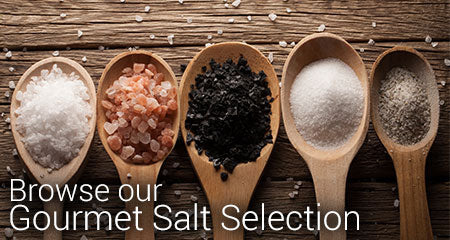
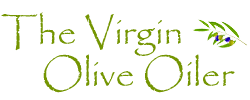
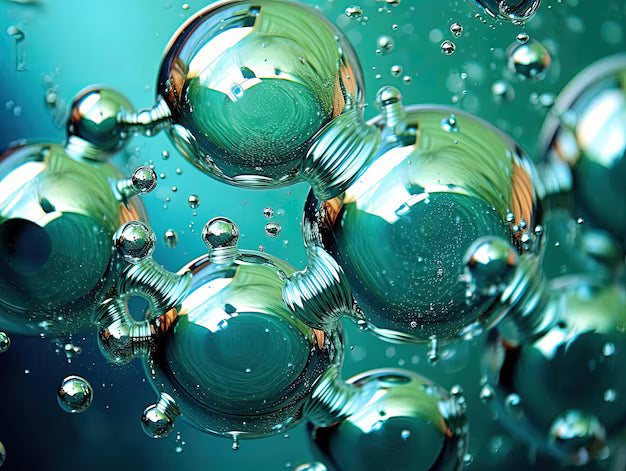

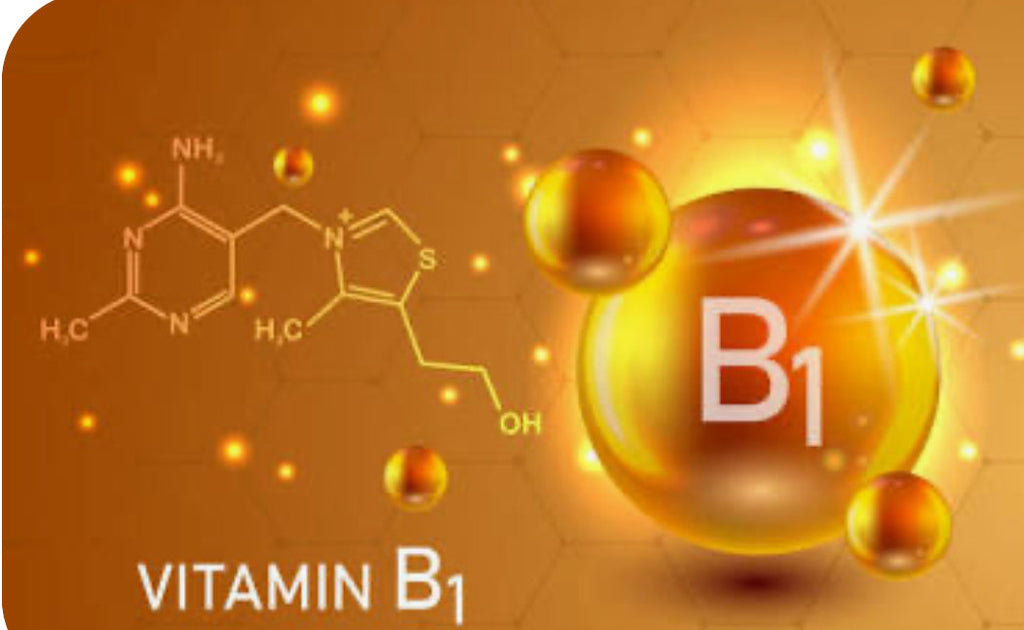
Comments (1)
Julie,
We will add K2 to our supplements.
Curt